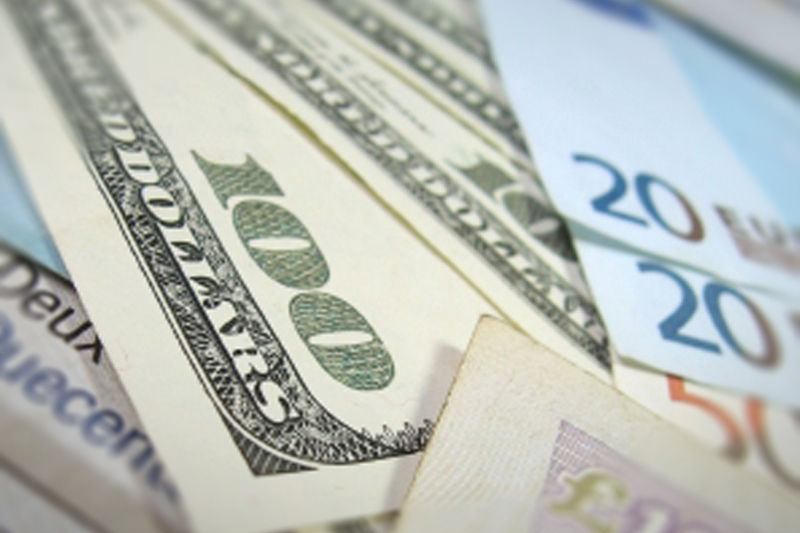Investing.com -- EUR/USD surged by more than 1.2% on Wednesday cracking 1.10 for the first time in more than a month, as currency traders prepared for a likely rate hike by the Federal Reserve when the U.S. central bank meets in the middle of next week.
The currency pair traded in a broad range between 1.0879 and 1.1042, before settling at 1.1026, up 0.0134 or 1.23% on the session. Since falling below 1.06 at the start of the month, the euro has rallied by nearly 5% against the dollar. The euro settled at its highest closing level on Wednesday since Halloween. On a dismal day of trading for the dollar, the greenback also slumped more than 1% on the session against the Japanese Yen to ¥121.53. The dollar is on pace to end the week at its lowest level against the yen in five weeks.
EUR/USD likely gained support at 1.0538, the low from Dec. 3 and was met with resistance at 1.1352, the high from Oct. 22.
The euro, though, is expected to retreat again next week if the Federal Open Market Committee approves a long-awaited rate hike at its two day meeting ending on Dec. 16. A bevy of FOMC members, including Fed chair Janet Yellen have sent strong indications that the Fed will raise rates at the meeting, as headwinds restraining economic growth continue to fade and the labor market nears maximum employment. Last Friday, the U.S. Labor Department said in a relatively positive report that nonfarm payrolls in November increased by 211,000 while the unemployment rate remained unchanged at 5.0%.
The Federal Funds Rate, the rate offered on interbank, overnight loans at the Fed, has remained at its current level between zero and 0.25% since December, 2008, shortly after the start of the Financial Crisis. Any increase of the targeted range for the Federal Funds Rate is expected to be modest at 25 basis points. The FOMC last approved a rate hike in June, 2006.
In September, all but four members of the FOMC judged that it would be appropriate to begin raising the target range for the Federal Funds Rate before the end of the year. The FOMC voted 9-1 to leave rates unchanged in each of the last two meetings, with Richmond Fed president Jeffrey Lacker serving as the lone dissenter both times.
Although Yellen noted in a speech last week that improving conditions in the U.S. economy have met the FOMC's expectations since it last met in October, she emphasized that long-term inflation still remains considerably below the Fed's targeted goal of 2%. In the FOMC's last projection, it estimated that Core PCE inflation will pick up noticeably next year and will rise further in 2017, but will not reach 2% until 2018. The Core PCE Index, the Fed's preferred gauge for inflation, strips out volatile food and energy prices.
Also, investors continued to digest modest increases in euro zone GDP over the last three months. On Tuesday, the 19-nation bloc in the European Union said third quarter GDP increased by 0.3% on a quarterly basis, amid rising inventories and higher household spending. Analysts expected GDP in the euro area to rise by 0.3% for the period. On a yearly basis, third quarter GDP increased by 1.6%, in line with consensus estimates.
The U.S. Dollar Index, which measures the strength of the greenback versus a basket of six other major currencies, plunged more than 1.2% on Wednesday to an intraday low of 97.21, before settling near session-lows at 97.33. Last week, the index reached a 2015-high at 100.55, before falling dramatically in Thursday's session when the European Central Bank failed to meet market expectations by approving limited easing measures at a meeting in Frankfurt.
